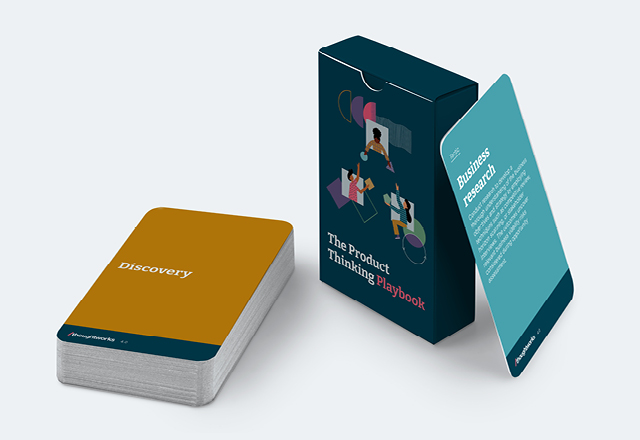Great product organizations continually solve real customer problems and accomplish strategic goals by organizing around products, not projects.
They put customer needs at the center of everything they do, building their strategy, processes, structure, and culture around delivering the right customer outcomes. They see technology as a key differentiator, not a cost of doing business. And they focus on meaningful business outcomes, not project outputs.
To keep pace with the digital natives that were founded as product organizations, many large enterprises embark on product organization transformations. In our new in-depth ebook, coming soon, we explore how enterprises can make the transition from ‘project mode’ to ‘product mode’ and adopt a product operating model. But every transformation journey follows a long and difficult path, with many pitfalls awaiting the unwary traveler…
The 20 biggest product organization transformation pitfalls
The shift toward becoming a great product organization isn’t just about changing job titles or implementing new tools and processes. It requires deep structural change and a different mindset, and in a traditional large enterprise, many things can prevent transformation from taking hold — or even from getting started.
1: There’s no clear reason to change: Many enterprises see success elsewhere and want to jump on the transformation bandwagon. But when they set off without clarity on the reason for becoming a product organization, securing short and long-term buy-in for the transformation is impossible.
2: A lack of unity at the top: No product organization transformation can succeed unless the senior leadership team is united and committed. Often, leaders have different opinions on what the change involves, they have conflicts over which success metrics to measure, and they may even disagree on why the transformation is necessary.
3: Leaders struggle to renounce their power: Some leaders enjoy the power of the HiPPO (the highest-paid person’s opinion) and have a vested interest in maintaining hierarchical structures and dictating changes. But one of the most important characteristics of great product organizations and all cultural transformations is the combination of top-down empowerment with bottom-up change (what we call the pincer movement).
4: Struggling to embrace the unknown: Great product organizations spend a lot of time and effort on discovering real customer needs and understanding the customer value of the products, services, and experiences they create. And unlike in traditional organizations, failure is seen as an opportunity to learn, not something shameful to be hidden.
5: Cookie-cutter transformation: Many enterprises install a new framework, tick the boxes, and wait for ‘transformation’ to happen. But great product organizations adapt frameworks, methodologies, and ways of working to fit their unique context — and the context of each product and product team.
6: Fixating on roles and responsibilities: Often, departments and individuals will operate with a rigid focus on their specific role within a set process, rather than working together toward a shared goal. This makes it more likely that the traditional ‘throw it over the fence’ mentality will continue, and classic organizational silos will remain unbroken.
7: Relabeling roles without real change: Some organizations change role names, but don’t actively improve capabilities or recruit new talent. This is a change in name only, and is unlikely to lead to any business performance improvement.
8: Not clearly defining product team boundaries: Autonomous, cross-disciplinary product teams are an essential component of the product organization. But many enterprises end up creating lots of ‘feature teams’ that work to preset requirements and aren’t able to test, learn, and iterate independently.
9: Losing sight of the customer: In failed product organization transformations, more time is spent discussing internal structures, processes, and policies than thinking about customer needs. In great product organizations, every decision starts with customer needs and focuses on delivering customer value.
10: Changing everything at once: An impatience to see results and quickly demonstrate shareholder value leads some enterprises to do too much, too soon. This usually has the opposite effect, leading to significant and prolonged dips in business performance.
11: A ‘once and done’ approach: Some transformations initially appear successful, but don’t stand the test of time. That’s often because there’s a prevailing mentality that the organization has successfully transformed forever, when there’s no such thing as ‘done.’ Great product organizations start from customer needs and have a continual evolution mindset, they understand that there will always be more changes to make.
12: Transforming in silos: Some enterprises transform their existing product management function with new tools, methods, and capabilities, but don’t see the results they’re looking for. That’s because great product organizations focus on creating cross-disciplinary product teams, bringing together skills from across the business into a long-lived team.
13: Treating product as an innovation function: Product teams shouldn’t be seen as separate from the teams that handle BAU operations. Instead, autonomous product teams should have total ownership of their product and operate with a DevOps-style ‘you build it, you run it’ mentality.
14: Perverse incentives: Sometimes, existing incentive structures stop organizational and technological changes from taking root. For example, teams incentivized on productivity rather than achieving desired outcomes may be unwilling to accept the inevitable short-term productivity dips that accompany most transformations.
15: Transformation theater: There’s often a temptation to create propaganda rather than communications. Structural and cultural change will only be successful if there’s transparency around the challenges people will face and the impacts that changes could have. If everybody is clear about why the change is happening and the value it will ultimately deliver, they’ll be more resilient to temporary setbacks.
16: Silver bullet expectations: A product operating model, product thinking, and product ways of working are not a silver bullet. A product mindset, practices, methods, tools, and techniques all help, but organizations must still have great people and great products that customers need and want.
17: Focusing on process over culture: Transformation is primarily a cultural change, but most organizations focus on the process and hope the culture will develop around it. In our experience, it’s best to apply the 80/20 rule; 80% of your efforts should be on culture change and 20% on process.
18: Top-down transformation roadmaps: A prescriptive, time-based roadmap dictated from the top is ironically antithetical to the change the product organization transformation seeks. Roadmaps should be created collaboratively, so there’s joint ownership and buy-in at every level of the organization.
19: Focusing on the tactical rather than the strategic: While quick wins are still wins, many risk-averse enterprises constantly select the low-hanging fruit. Great product organizations seek real, high-impact change and aren’t afraid to address the elephants in the corner.
20: Thinking agile is the same as product: Operating as a product organization requires enterprises to be agile, and probably to use Agile methodologies. But Agile tends to focus on ‘the what’ and ‘the how’ rather than ‘the why.’ Great product organizations obsess about the outcomes, not the process and methods they use to create them.
Discover how to avoid all the transformation pitfalls
To learn more about how you can overcome the common obstacles to product organization transformation, download our new ebook, 'How to build an organization that creates great products'. Inside, you’ll find practical advice on how to set yourself up for success, and you’ll get a guided tour through the seven steps to becoming a great product organization.


















